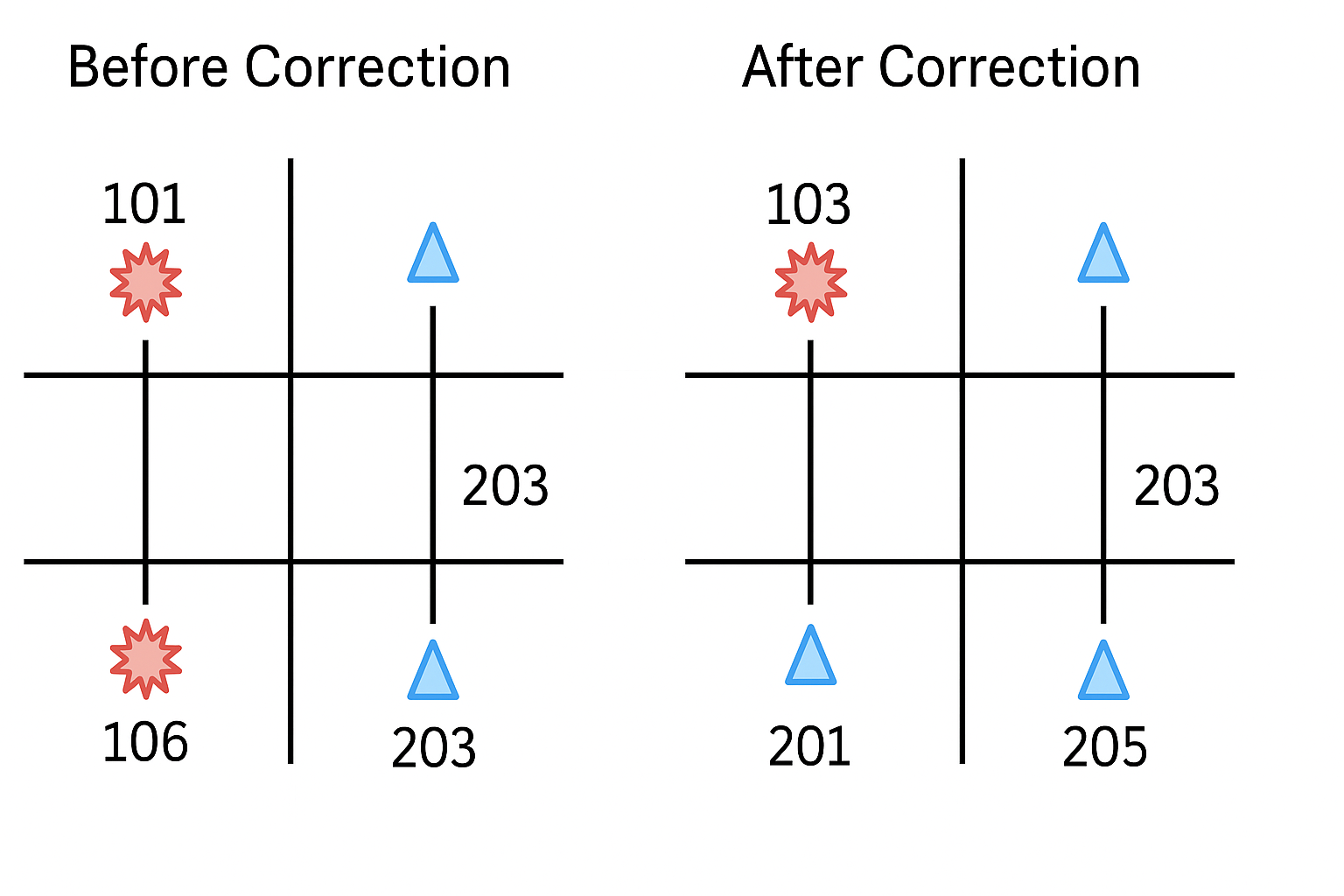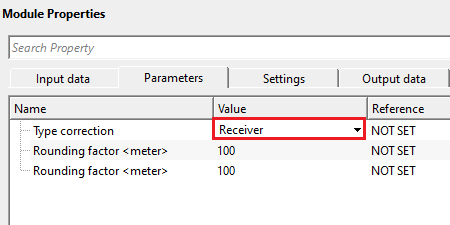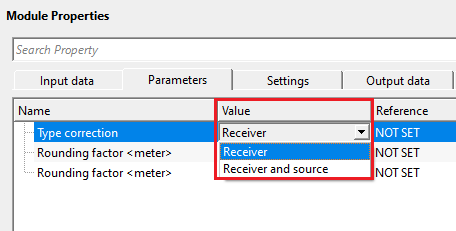![]()
![]()
In seismic data processing, every source (shot point) and receiver (geophone or hydrophone) belongs to a specific line — known as a source line or receiver line. These line IDs help define the geometry of the survey — i.e., where each shot and receiver physically lies in space.
Sometimes, due to navigation errors, field entry mistakes, or survey mergers, the line IDs get recorded incorrectly or inconsistently. So, correction of Source/Receiver Line IDs is necessary. What does it means is that updating or fixing the incorrect, missing, or mismatched line identifiers for sources and receivers so that each belongs to its correct physical line.
Navigation errors in the field
– GPS drift or manual entry errors can cause source/receiver coordinates to appear under the wrong line ID.
– Example: Source at inline 120 accidentally logged as inline 220.
Merging multi-crew or multi-vintage surveys
– Different crews may use different line numbering systems (e.g., 1000-series vs. 2000-series).
– Line IDs must be unified for consistent geometry.
Data loading into processing systems (e.g., SEG-Y, SPS, or navigation databases)
– Incorrect line IDs cause traces to map into the wrong bins.
– This produces fold irregularities, wrong offsets, and artifacts in stacking/migration.
Misalignment between source and receiver geometry
– When source and receiver line IDs do not match spatially, the trace midpoint and binning will be wrong.
How to do the correction?
•Plot the existing source and receiver line IDs & identify the incorrect or mismatched positions
•Compare the navigation coordinates with pre-survey/plot survey coordinates. Assign each source and receiver to the their correct line based on spatial proximity
•Update the source and receiver line IDs by manual or automatic assignment like kriging interpolation etc.
•After correction, recompute offsets, mid points, cmp positions, inline and crosslines etc.

Before Correction:
•The grid lines represent survey lines — think of them as the inline and crossline directions in a 3D seismic survey.
•The red star symbols represent sources (shot points).
•The blue triangles represent receivers (geophones or hydrophones).
•Each intersection on the grid corresponds to a nominal source or receiver position.
1.Incorrect Line IDs:
oThe red source points are labeled with Line IDs 101 and 106, which are incorrect.
oThese IDs don’t match the physical position where they lie on the grid.
oFor example:
▪The upper shot labeled 101 is actually located closer to Line 103.
▪The lower shot labeled 106 lies closer to Line 201.
2.Receiver Lines Misaligned:
oReceivers on the right both have Line ID 203, but they are positioned on different physical receiver lines.
oThis indicates that field navigation data (or SPS header data) had misassigned or duplicated line numbers.
After Correction:
•The same grid is retained — meaning the physical geometry (X, Y coordinates) hasn’t changed.
•What’s changed is the line identification numbers associated with those positions.
Source Line IDs Updated:
•The upper source was corrected from 101 → 103
Now matches the correct line (upper grid line).
•The lower source was reassigned to a new receiver line (not shown explicitly) for correct alignment.
Receiver Line IDs Updated:
•The lower-left receiver changed from 203 → 201, matching its actual line.
•The lower-right receiver updated from 203 → 205, now belonging to its own correct receiver line.
![]()
![]()
Input DataItem
Input trace headers - connect/reference to Output traces of Read seismic traces/Read SEG-Y traces or any corresponding module which got Output trace headers
![]()
![]()
Type correction { Receiver, Receiver and source } - select the type of correction. By default, Receiver.


Rounding factor - If distance between two receiver is less then given distance,the two receivers will have the same number. This is useful in avoiding fractional Receiver SP numbers. By default, 100.
Rounding factor - If distance between two sources is less then given distance,the two sources will have the same number. This is useful in avoiding fractional SP numbers. By default, 100.
![]()
![]()
Auto-connection- By default, TRUE(Checked).It will automatically connects to the next module. To avoid auto-connect, the user should uncheck this option.
Skip - By default, FALSE(Unchecked). This option helps to bypass the module from the workflow.
![]()
![]()
Output DataItem
Output trace headers - generates updated output traces with corrected source and receiver line IDs.
There is no information available for this module so the user can ignore it.
![]()
![]()

![]()
![]()
There are no action items available for this module.
![]()
![]()
YouTube video lesson, click here to open [VIDEO IN PROCESS...]
![]()
![]()
Yilmaz. O., 1987, Seismic data processing: Society of Exploration Geophysicist
 * * * If you have any questions, please send an e-mail to: support@geomage.com * * *
* * * If you have any questions, please send an e-mail to: support@geomage.com * * *
![]()